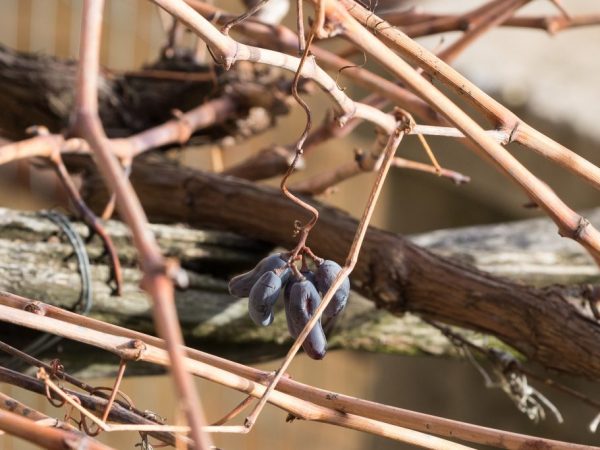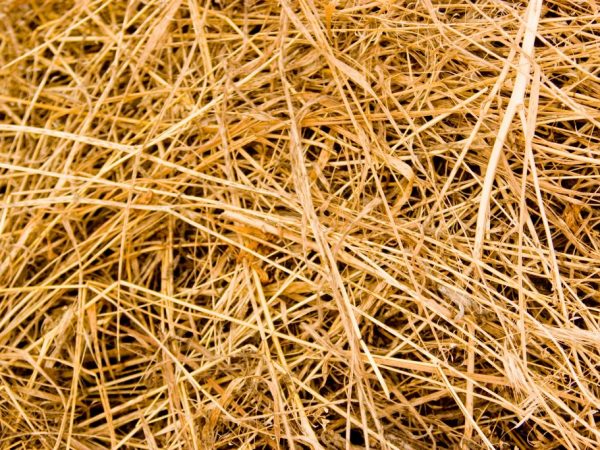Shelter rules for grapes for the winter in Siberia
Grapes are a heat-loving plant that prefers the southern sun and does not tolerate cold weather. For regions with a cold climate, special varieties have been bred, however, they also require special care. How to cover grapes for the winter in Siberia, in order to get a high-quality harvest in spring, every Vintner should know.

Shelter rules for grapes for the winter in Siberia
Why cover the vine
Grapes destined for growth in the north are able to withstand frosts from 20 ° C to 30 ° C, thanks to the dormant buds. These include the varieties Muromets, Solovievsky, Tukan, Kodryanka, Scarlet Muscat.
The Amurskiy variety is a record holder for durability: it is able to survive a 45-degree winter. The most dangerous period is spring frosts. It is then that the kidneys, as well as young unhardened growth, need warmth and favorable conditions. A sharp change in temperature can destroy a sensitive plant: this phenomenon is even more dangerous than severe frost. The thaw causes the awakening of grape sprouts, he will not survive the following frosts.
Freezing of the soil to -20 ° C is fraught with the death of the fibrous root system of grapes. Unlike the aboveground part, it will not be able to recover. Fragile seedlings suffer when the temperature drops by only a few marks below zero.
To protect the grapes, in the cold regions the owners have adapted to shelter them for the winter. Otherwise, from 70 to 100% (depending on the strength of the frost) of the eyes may die: their presence in such temperature conditions is possible for no more than 3 days.
What time to cover the vine
Before the immediate procedure for preparing a winter shelter, it is important to tackle the vine. It is cut off, removed from the trellis, treated with copper sulfate, charged with moisture and fed.
Traditionally, Siberian frosts come in late September-early October. Right before the expected snowfall, they are engaged in the equipment of a heat-insulating structure (with a temperature of -5 ° C to -8 ° C), as well as hardening of bushes. You should not rush to organize a shelter: this way, with temperature fluctuations, condensation can accumulate on the vine, - the grapes will mate. To prevent such situations, ventilation windows are made on the sides of the structure.
It will be possible to temporarily cover the plant using the following algorithm of actions:
- pruning a grape bush;
- digging a trench;
- mulching the soil in the trench in order to avoid the germination of weeds and the invasion of pests;
- a bunch of shoots and laying them out on the bottom of a dug hole;
- covering the trench with polyethylene or similar material.
Such a shelter is able to protect grapes from frost, gives it the opportunity to accumulate sugar for a month and a half and in this way harden.
Shelter materials
It is possible to save grapes from freezing with the help of several types of material. Roots will be well protected by mulch from pine needles, larch, peat and straw, grain husks.The soil is insulated with a wooden layer, cardboard, earth or a reed mat, spruce branches. It is also advised to purchase insulation material in the store.

Pine needles will protect plant roots
For dampness and spring melt water, polyethylene or roofing material is used. In a snowy winter, a snowdrift perfectly serves as a heater. The best option is considered an air-dry material, which includes spunbond, foam, fiberglass.
Shelter technique
There are 2 methods widely used in Siberia to cover grapes for the winter. This is a dry method and one that uses snow with soil.
Residents of Siberian regions prefer the first option of covering technology. The reason lies in the specifics of winter: there it is long and stable, cold and snowy. The second technique is relevant in central Russia, where it is difficult to predict the course of winter.
Special attention is paid to the root system when preparing Siberian grapes for winter. The trunk circle is covered with spruce branches within a radius of 2 m, and after the snow falls, also with a snow cover. The calculation is as follows: 1 m of snow keeps 1 ° С.
Dry cover
It is used if winter is firmly established and warming is no longer expected. To create a greenhouse or tunnel, improvised means like slate, agrofibre, boxes, bags are suitable.
Dry shelter implies the creation of familiar and comfortable conditions for the grape plant. The danger of kidney podoprevaniya must be excluded. The vine is tied up and wrapped in polyethylene so that it does not touch the ground. Then it is laid on the bottom of the pit, covered with roofing material, where it is fastened with metal staples or wooden hooks. Arcs and gypsum cardboard are installed on the trench, the entire structure is covered with polyethylene from moisture and rain. Along the radius, the shelter is pressed to the ground with a layer of soil, boards, straw, branches or oak leaves (installed with shields in the form of a roof) so that precipitation does not fall inside the pit. If they are boards, they are hammered in with nails.
Using snow with soil
This method is easy to carry out, does not require special materials: enough snow and moist soil / turf from the inter-row spaces. The soil is prepared in advance and stored in bags. The shelter with branches is covered with a layer of 1/3 m. To avoid podoprevaniya, the bush is initially treated with a solution of lime or copper sulfate and dried. Only then it is covered with polyethylene material (or propylene) and covered with dry branches and snow 50 cm. So the plant overwinters safely, does not rot and mold, and by April (if a thaw comes) it can be opened.
The vine is dried and returned to the trench, to the bottom, covered with soil and covered with waterproofing material such as synthetics, pine needles, larch, spruce branches. In the summer, it finally leaves the shelter and is fastened with trellises so as not to damage the kidneys.
A similar technique is able to help preserve and cover even shoots that have not had time to ripen. To avoid rotting of the eyes, the structure is additionally covered with slate or black film.
Shelter of young grapes
The younger the plant, the more sensitive to cold it is. Annual seedlings should be covered with wooden boxes, buckets, straw, sawdust. The best option is to huddle the ground around the bush, erect a frame made of metal or wood and cover it with foil and roofing felt. If the winter is snowy, precipitation is used as an improvised material.
findings
Following agrotechnical recommendations, it is possible to grow grapes even in the harsh Siberian conditions. The shelter will provide the plant with protection from frost and temperature changes in winter.


